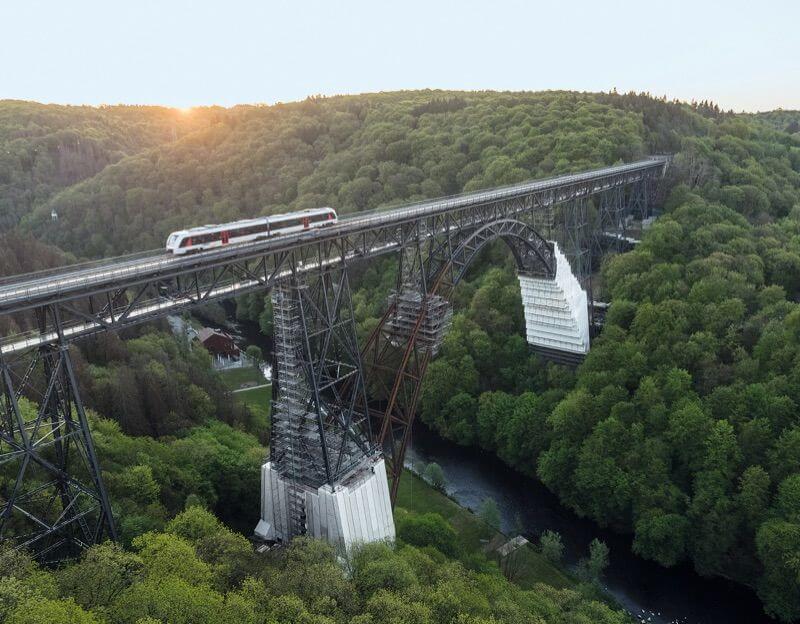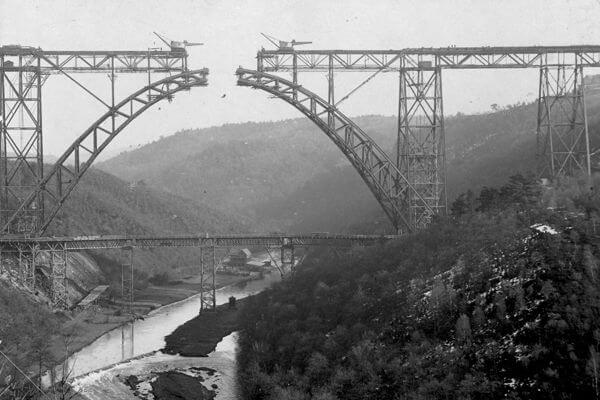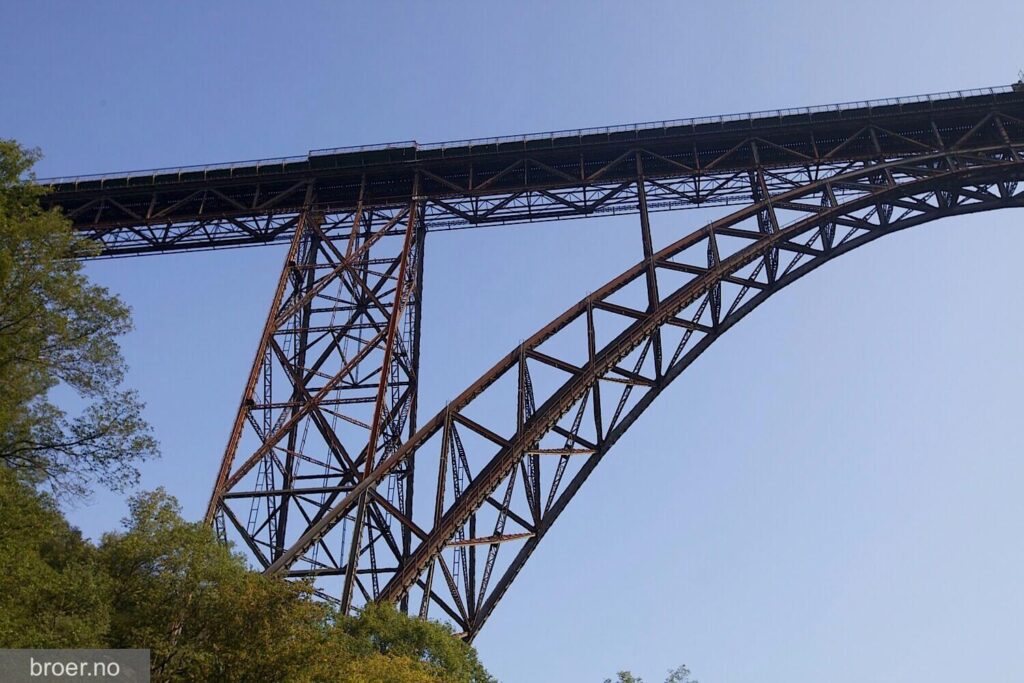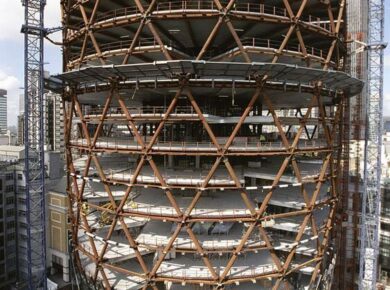Müngsten Bridge is the highest railway bridge in Germany. The bridge is 107 metres high and spans the valley of the river Wupper. Originally the bridge was named Kaiser-Wilhelm-Brücke to honor Emperor Wilhelm I. After the end of the monarchy the bridge was renamed after the nearby settlement of Müngsten.

Photo: Teupe
The six support columns have a maximum height of 69 meters. In the middle of the structure, the main arc has a span of 170 meters. The overall length of the structure is 465 meters. A total of 5,000 tons of steel were used in its construction. 950.000 rivets hold the structure together. During construction, a number of advanced building techniques were used.

Author: Landersen
Pioneering in technical terms was the assembly of the arch in free pre-construction, that is, without a center (an auxiliary structure). The pre-assembly of the halves of the arch on the ground and their later joining in situ reduced both the time and the money expended.

Photo: Stadtarchiv Solingen
Anton von Rieppel, an architect and engineer, was in charge of the project. A memorial plaque at the foot of the bridge reminds of his efforts. Originally, the bridge was planned to be single-track. However, high future traffic growth projections led to the redesign as a dual-track bridge. The bridge’s official inauguration celebration took place on 14 July 1897.

© Christian Beier
Since 2014, the bridge deck, the piers and the arch as well as the abutments have been repaired. Damaged steel parts have been replaced In addition, the entire structure has received comprehensive corrosion protection. The work was carried out under the protection of enclosures to prevent blasting debris from entering the environment. The restoration was completed in 2021.

Source: broer.no
About the Author:

Bruno Dursin – Managing Director at Believe in Steel. Bruno has more than 30 years of experience in promoting steel & steel solutions. His clients benefit from his extensive network within the building industry.



